If your business is still on the fence about implementing personalized marketing in your strategy, here are 6 reasons why you should have it and how to get started.
There’s a shift to personalized marketing, and it is not only for businesses but also to achieve customers’ expectations.
From Google to Amazon and Facebook, we are constantly being bombarded by personalized marketing almost every single day. It’s little wonder that this has led users to expect the same level of personalization in marketing from all companies and brands, no matter the size.
In fact, personalization has changed the whole game of marketing from the bottom up, making it somewhat necessary if you are looking to stay competitive. Companies that do not provide a tailored experience now run the risk of getting left behind.
However, if your company or brand has yet to implement personalization in your marketing, there’s no need to worry. Personalization is easy to get started and can be as simple as just including your customer’s first name in their promotional email.

But of course, marketers have gone far beyond leveraging just subscriber’s first names. Now, let’s understand what personalized marketing is all about.
What is Personalized Marketing?
Personalized marketing or digital marketing personalization is basically one-to-one marketing.
It involves the practice of collecting data and integrating the information into your marketing strategies to deliver targeted messages, products, and experiences that tailors to a prospect on an individual level.

This stands in contrast to the traditional marketing approach which uses a catch-all marketing message that is crafted for the general audiences. Targeting everyone, but reaching no one.
In comparison, personalized marketing relies heavily on relevance. When used right, this can not only boost your sales revenue but also make your marketing campaign highly effective without costing you a cent more than what you need.
So what are you waiting for? Let’s dive into how personalization in marketing is done!
How to Get Your Personalized Marketing Right?
Even though there are many marketing tools out there that already integrate personalization to provide more relevant marketing materials to different audiences, many marketers simply aren’t using these features.
This is because many marketers still don’t fully understand how personalized marketing works.
Do you still struggle with the idea of how do you personalize your marketing content or message for tens of thousands of people?
This really comes down to your ideation on how you integrate personalization in marketing campaigns. To answer the question, here are 4 ways how you can implement a successful personalized marketing strategy.
1. Gather important data
When it comes to personalization in marketing, data is your friend. It is what you need to have, to know who your customers are and what exactly are they looking for.
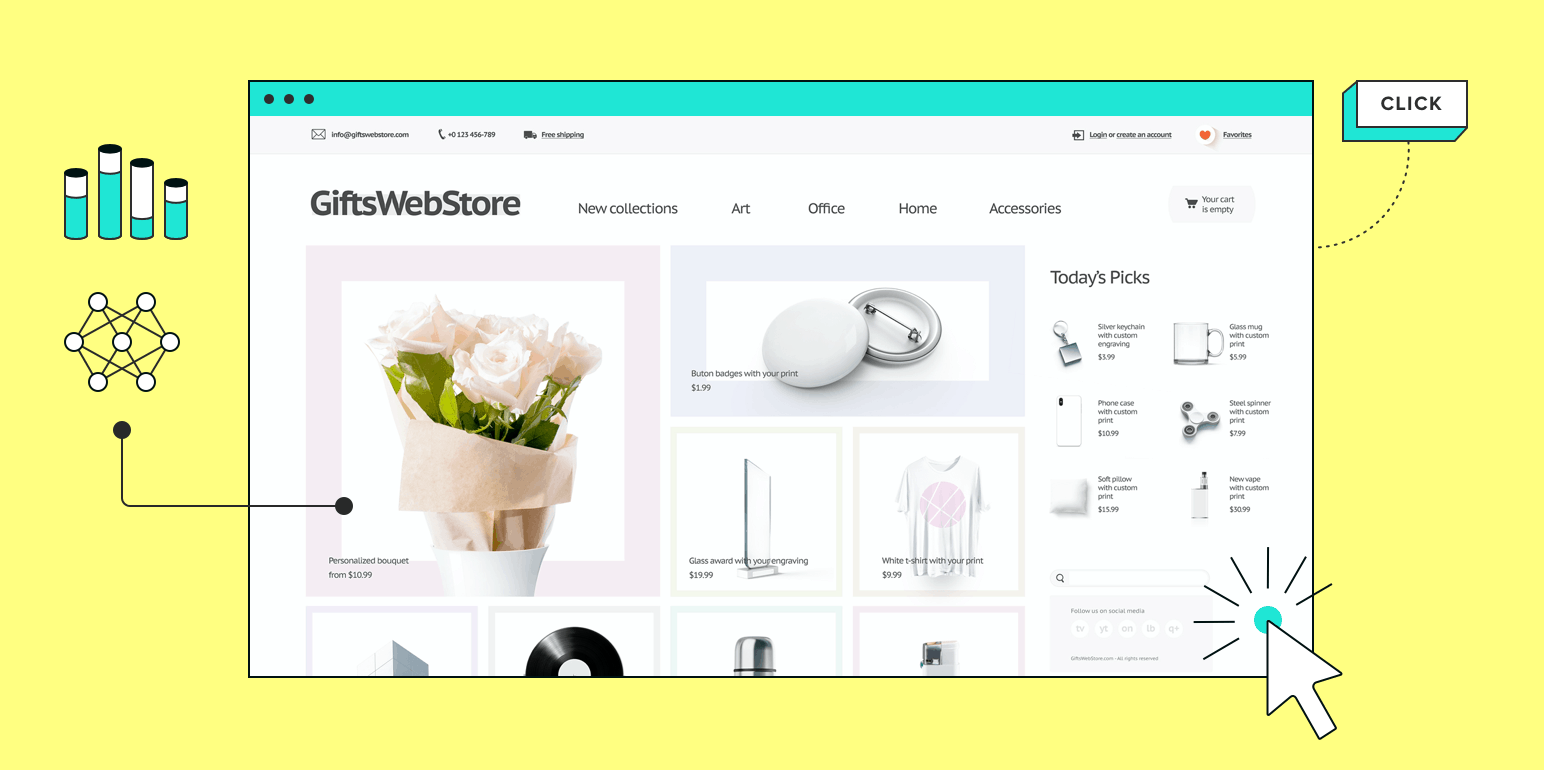
This comes down to what data you are measuring and how exactly can you use it to build the success of your campaign. And while many brands and businesses are afraid of collecting data in fear of impeaching data privacy, the thing is…
Customers want personalization and many are willing to share the info to get it.
According to a study by SmarterHQ, as much as 90% of consumers are willing to share their personal behavioral data with companies for a cheaper and easier experience. If you think about it, that is why YouTube’s business model works so well.
Still, it really matters what data you are collecting from your customers, and how you plan to craft your marketing experiences.
As a guide, some of the important metrics you should track aside from personal data, is their behavioral data and this includes email opens, link clicks, funnel footprints, shopping cart data, purchase history, and much more.
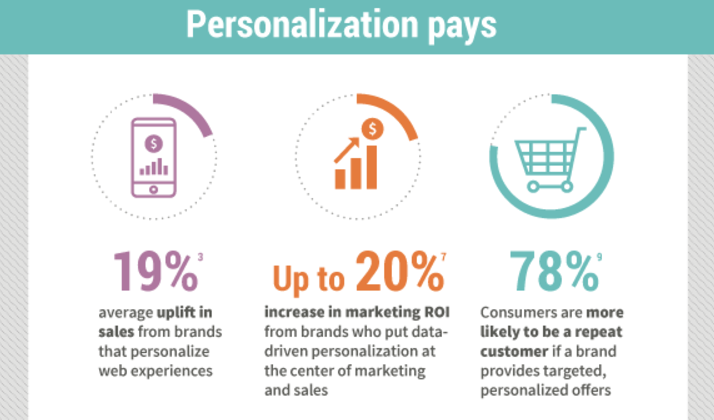
Identify groups of activity and see what your customers are continuously clicking on to know what they need. The more data is collected, the more effective your personalized marketing can be to cater to each user experience.
While data is important, it is also how you use it to paint a picture of your customer personas which brings us to our next point of segmenting your faceless audiences into different types of customer personas.
2. Create Customer Personas
Again, the main benefit of data in your personalized marketing is not just to address your users by their first names, but rather the ability to segment your audience based on their traits ranging from age, gender, income, location, past behaviors, and so on.
Ultimately, this allows you to address specific audiences more directly with a message that understands their needs and challenges.
You can start by researching and interviewing your existing buyers or send a survey to simply learn more about your customers and get to know them on a deeper level.

With all the information you have gathered, craft in-depth customer personas that reflect your actual customers’ demographic, behavior, lifestyle, goals, and motivation. Name them and always keep them in mind when you are crafting your marketing campaign.
Personalized marketing can often feel overwhelming when it feels like you are crafting for tens of thousands of people. However, this can change when you are just addressing Tracy.
Besides this, always consider geolocation when you are crafting your customer personas and their personalized marketing message because though this is one of the more straightforward aspects that bring results, it is often overlooked.
On the other hand, knowing your audiences based on interests can also help connect and build better rapport. For example, if you have audiences in their 20s to 30s that like the Star Wars franchise, you can always use more Star Wars references in your email campaigns, blog posts, or even a Tweet.
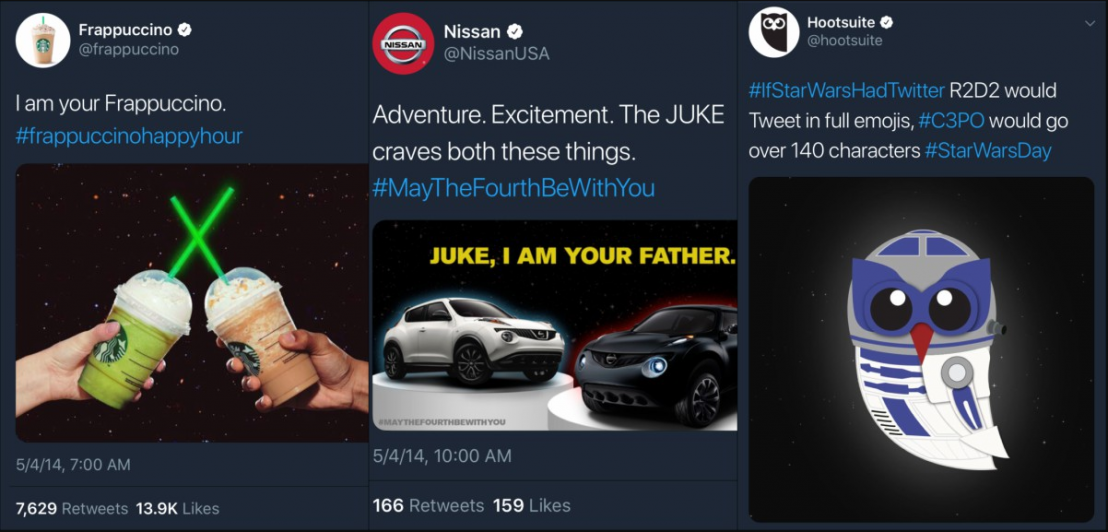
This would get so much more retweets and attention as compared to sharing a normal post about your new product or service.
3. Map out Your Personalized Content
When building a personalized strategy, you are actually creating an experience and this should span across every device and channel.
You need to track who they are and what they have done. Because the last thing you’d want to happen is to have a customer who just purchased your software yesterday receive an email notification from you about a demo sign-up.
Or another example may be that they have opted in through downloading a free case study on your landing page, only to receive another prompt regarding the same case study. That’s simply a bad experience and can reflect unprofessionalism from your brand.
That’s why when you’re crafting and integrating personalization into your messaging, also take into consideration how your content places itself in the bigger scheme of things.
Each and every content you create should be a unique touchpoint for your leads that guides them down your marketing and sales funnel.
Avoid those scenarios above by mapping out all your content marketing strategy and tying them to your customer personas, as well as track what your prospects have done, the emails they have clicked on, the type of content that they like through tagging.
Also, anticipate their future needs by constantly asking questions like what does the customer want here? What are they looking for?
Guide your potential leads and buyers to relevant content, incentives, and recommendations based on their preferences and where they are currently at in their buyer’s journey.
The idea is best illustrated by WordStream with this ice cream cone.

If they are still learning more about your industry, guide them to your educational content and try stimulating their pain point. Otherwise, if they are at the stage of comparing products, link them to content that talks about your product or service’s unique selling point.
4. Spread Personalization across all channels
Personalized marketing is a strategy on its own that is also about delivering timely and relevant messaging to your customer personas across all your marketing channels.
That means different types of marketing mediums, such as email, social media, blog posts, landing pages, advertisements, and anywhere your potential audiences may be.

Because nowadays, data has shown that it takes a prospect several touchpoints before they eventually buy your product. So you want to make sure you leverage retargeting to remind your customer when they are ready to buy you.
Besides that, having your message across various channels showing to people who were interested in you also increases the effectiveness of all other marketing efforts, from brand awareness to recall.
Benefits of Personalization In Marketing
By now you should understand that investing in personalization efforts to create better user experiences can lead to massive pay off and rewards for brands, but let’s look further into these six benefits of personalized marketing.
1. Precise Content Targeting
First and foremost, applying personalization to your content for each and every customer segment can make a pretty huge difference in engagement.
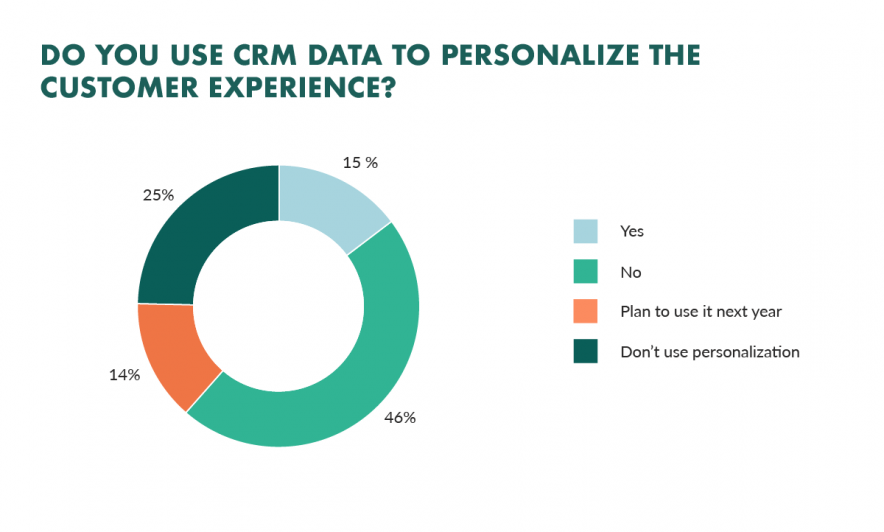
Customers nowadays expect that you know their needs. When making a query in the search bar, they also expect content that answers it.
So when you are creating content for every touchpoint throughout the funnel, be clear about what your customers want here and answer what they are looking for.
When it comes to creating a targeted content or blog post for the web, you can consider optimizing them for better rankings. And the right tool for the job would be BiQ’s Keyword Intelligence.

With Keyword Intelligence, you can discover important keyword details including search volume, trends, as well as search intent that will guide you to select the right keywords.
Pair it with BiQ’s Content Intelligence and you can analyze your content against the Top 10 ranking results to make sure you fulfill all the content gaps and have the right keywords included to build the highest contextual relevance.
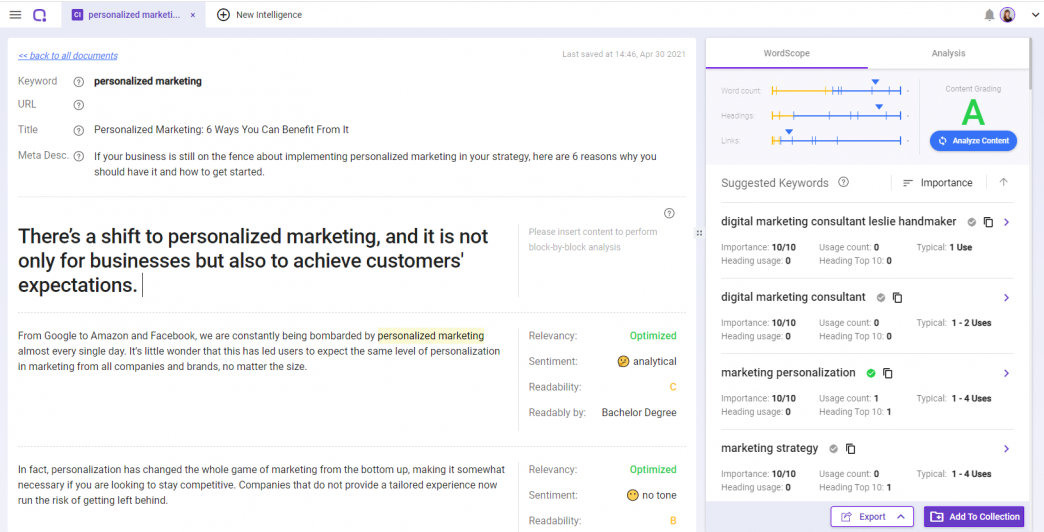
Additionally, you can also look at your content section by section to make sure your tone of voice is correct and that you are writing for your customer personas.
2. Target Specific Audience
Here’s the thing with running a business, if you take anyone as a customer then you’re not building your business correctly.
After all, your product or service is designed to provide value for specific customers, so you would also want to make sure your marketing is only directed at them.
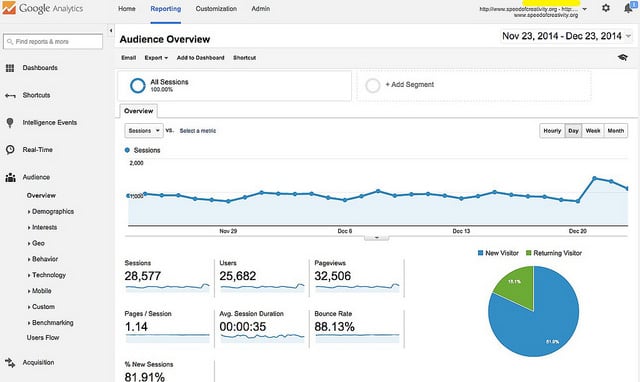
Yes, we are talking about targeting specific audiences and choosing your customers. There are many benefits to this but most importantly it enables you to do your best work and gives you the opportunity to excel at serving the right people.
Honestly, you choose your customers through your marketing messages, so go specific with personalization in all your content and marketing strategies to resonate with your customer persona and build the right customer base.
As Seth Godin has once said, “choose your customers and you choose your future.”
3. Build Relationship with Customers
It may be astounding but a technique as simple as including a person’s first name in the email can be the bridge to connect with your consumers on a personal level.
People just naturally gravitate to the sound or mention of their name, so much that emails that include the first name of the recipient in their subject line are still one of the most effective email subject lines that are guaranteed to get a high clickthrough rate.

On the contrary, receiving emails that are irrelevant to the users can often lead to frustration. And these same users are less likely to engage with the brand or purchase the product.
Overall, you need to be implementing good personalization to build trust. and solidify your relationship with your customers. Not to mention, targeted content will satisfy your audience’s needs and just make for happier customers with increased brand loyalty.
4. Gives Better Recommendations
When it comes to using personalization to give better recommendations, there’s no better example to illustrate this than Amazon.
From personalized onsite content to providing personalized emails and offers, the e-commerce giant has really successfully tapped into actionable customer data for this.
Especially with its iconic “frequently bought together” and “customers who bought this item also bought” prompts, the e-commerce giant sees as much as 44% of its customers buying the items from these recommendations.
5. Boost Sales & ROI
As with these better recommendations and targeted offers, you will naturally see an increase in your sales and ROI.
It is certainly not a small figure either. Based on a report by ClickZ, companies using advanced personalization have achieved a US$20 return for every $1 spent.
6. Improve Customer Experience
At the end of the day, the most important benefit of using data to personalize your marketing is to improve your customer’s experience.
It’s about sending relevant and unique messages to the right person at the right moment and creating an amazing experience.
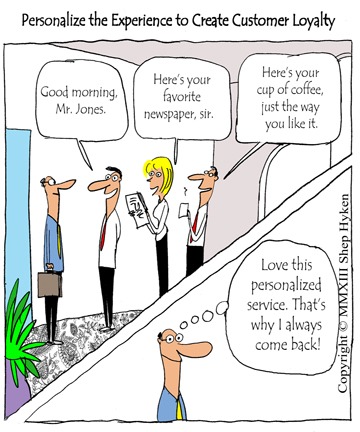
Because at the end of the day, your customers might not remember your emails or brand messages but they would certainly remember how you made them feel
And truthfully, that is all that matters which makes personalizing your marketing and sales processes all the more worthwhile!
Conclusion
As we come to the end of this post, we hope if anything, you have come to terms with the fact that personalization is the present and future of marketing.
With consumers becoming more aware and accustomed, it’s unlikely that they would tolerate anything less than highly targeted and personalized content from brands. As marketers, now’s the time to start and improve your personalization in digital marketing!




